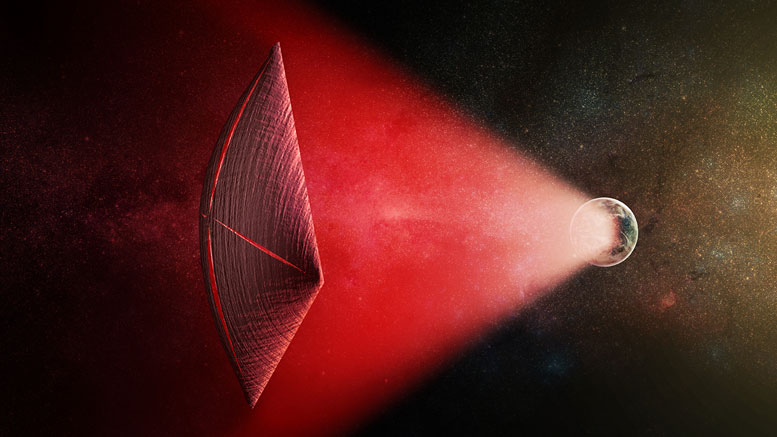
An artist’s illustration of a light-sail powered by a radio beam (red) generated on the surface of a planet. The leakage from such beams as they sweep across the sky would appear as Fast Radio Bursts (FRBs), similar to the new population of sources that was discovered recently at cosmological distances.
A new study from the Harvard-Smithsonian Center for Astrophysics suggests that fast radio bursts could be evidence of advanced alien technology.
The search for extraterrestrial intelligence has looked for many different signs of alien life, from radio broadcasts to laser flashes, without success. However, newly published research suggests that mysterious phenomena called fast radio bursts could be evidence of advanced alien technology. Specifically, these bursts might be leakage from planet-sized transmitters powering interstellar probes in distant galaxies.
“Fast radio bursts are exceedingly bright given their short duration and origin at great distances, and we haven’t identified a possible natural source with any confidence,” said theorist Avi Loeb of the Harvard-Smithsonian Center for Astrophysics. “An artificial origin is worth contemplating and checking.”
As the name implies, fast radio bursts are millisecond-long flashes of radio emission. First discovered in 2007, fewer than two dozen have been detected by gigantic radio telescopes like the Parkes Observatory in Australia or the Arecibo Observatory in Puerto Rico. They are inferred to originate from distant galaxies, billions of light-years away.
Loeb and his co-author Manasvi Lingam (Harvard University) examined the feasibility of creating a radio transmitter strong enough for it to be detectable across such immense distances. They found that, if the transmitter were solar powered, the sunlight falling on an area of a planet twice the size of the Earth would be enough to generate the needed energy. Such a vast construction project is well beyond our technology, but within the realm of possibility according to the laws of physics.
Lingam and Loeb also considered whether such a transmitter would be viable from an engineering perspective, or whether the tremendous energies involved would melt any underlying structure. Again, they found that a water-cooled device twice the size of Earth could withstand the heat.
They then asked, why build such an instrument in the first place? They argue that the most plausible use of such power is driving interstellar light sails. The amount of power involved would be sufficient to push a payload of a million tons, or about 20 times the largest cruise ships on Earth.
“That’s big enough to carry living passengers across interstellar or even intergalactic distances,” added Lingam.
To power a light sail, the transmitter would need to focus a beam on it continuously. Observers on Earth would see a brief flash because the sail and its host planet, star, and galaxy are all moving relative to us. As a result, the beam sweeps across the sky and only points in our direction for a moment. Repeated appearances of the beam, which were observed but cannot be explained by cataclysmic astrophysical events, might provide important clues about its artificial origin.
Loeb admits that this work is speculative. When asked whether he really believes that any fast radio bursts are due to aliens, he replied, “Science isn’t a matter of belief, it’s a matter of evidence. Deciding what’s likely ahead of time limits the possibilities. It’s worth putting ideas out there and letting the data be the judge.”
The paper reporting this work has been accepted for publication in the Astrophysical Journal Letters.
Reference: “Fast Radio Bursts from Extragalactic Light Sails” by Manasvi Lingam and Abraham Loeb, 3 March 2017, The Astrophysical Journal Letters.
DOI: 10.3847/2041-8213/aa633e
arXiv: 1701.01109

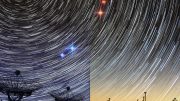


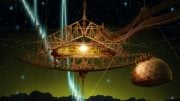
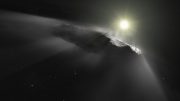
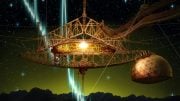

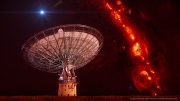
Are we this afraid to be alone in the universe? Or afraid if maybe we have to figure all this stuff out on our own? Good news is that all the answers are out there and kind of fun to crack these mysteries on our own IMHO if you are insanely curious and like puzzles more than watching cat videos. Bad news is we may be locked into our galaxy (and own solar system) by the quite rigid rules of physics and science as we know it. Yes Hollywood movies make us want to dream up a few cool shortucts and yes I am sure a few cool tricks are still out there to be discovered, but there is this slight problem of distance and time that works against us. No one is going to save us.. it is just us and we are riding a ticking time-bomb of great filters still to survive long enough to escape our comfortable Earth ship to survive in deep space somehow. I get that clickbait is the new thing to get attention for these articles or scientists that can’t find the most obvious answers to the questions like this one of radio signal blasts… But where is everyone Fermi and Drake? The most obvious answer may just be that the Universe likely has a lifespan of over 2 trillion years and we show up just a fraction of 1% earlier than the others (by tiny fraction I mean just 10-20 billion years earlier) thanks to our giant impact theory and our giant moon and 20 other surprisingly rare events that nudged us in the accelerated evolutionary path to life starting up and then evolving in a surprisingly stable place for billions and billions of years. Yeah I know they told you it was statistically impossible to be alone, so if that 1,000,000,000,000,000,000,000,000,000 number looks big just divide it 9 times by 1,000. Or divide it down by 20 or 50 times as we may just find out that there are way more special things to start life or accelerate evolution (like giant moons or 70% water ratios, or salt water to fresh water ratios, or plate tectonics or titled axis with seasons, or a thousand other things Earth has like a magnetic shielding). I am not saying the Dinosaurs were lucky 65 million years ago, but mammals were and you have to worry that a rock just 50% bigger hits the restart button, or wipes all life out completely, or a rock just 50% smaller and we are still some angry lizards soaking up free sunshine today. Yeah, I know some of those factors of 1/1000 might be 1/10, but some of them are 1/trillion also like how many species can develop the ability to pass down written info, control tools like fire, fossil fuels and computers and connect them all together with borg like internets. Cool thing is in 20 years from now we will know almost for sure if life started elsewhere in our own solar system when earth is vomiting life all over the place (yes panspermia is the worst scientific hypothesis ever dreamt up and no titan will never have other forms of life). I hope Enceladus does have some cool underwater lobster waterbear creatures on it, but my gut says it can’t for a few dozen good reasons, but I hope to be wrong (and No NickB, I don’t worry that will prove the great filter is still ahead of us, I think there are dozens of great filters at all stages, but the biggest of all is how life starts and we are well past that one!). Crispr9 is no more friend or foe than the sword or nuclear power, but it is all the tool we need to get past the next filter, then we need another tool, then another effort to get past another filter like every hurdle that Moore’s law seems to get stuck at, then skips ahead to be right on track. They keep telling us that space is moving apart and it is, but yet Earth is just as close to our Sun and our Solar system is still locked in nicely to our Galaxy and we are along for a nice ride to the great attractor and maybe they are on track to meet up at the next big recycle bang.. but I think maybe we get it right this time around see if we can figure a few things out before then. JustMy2bitcoins